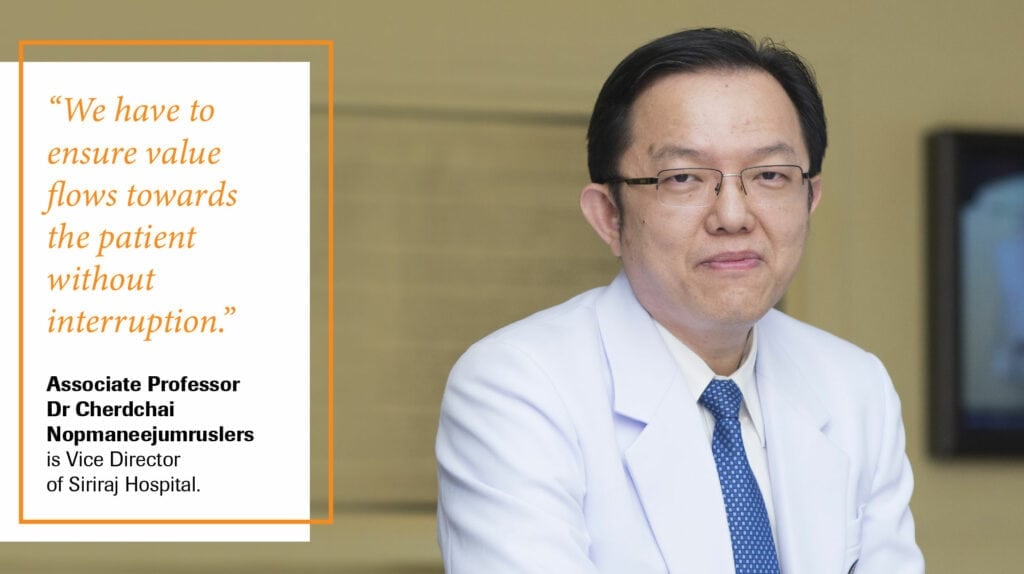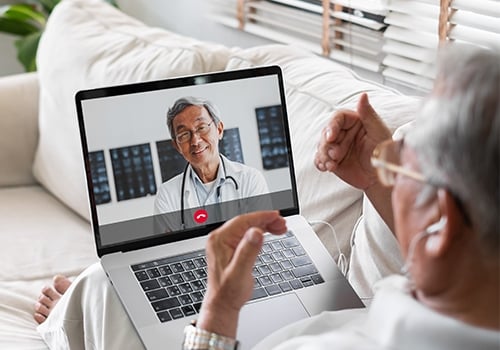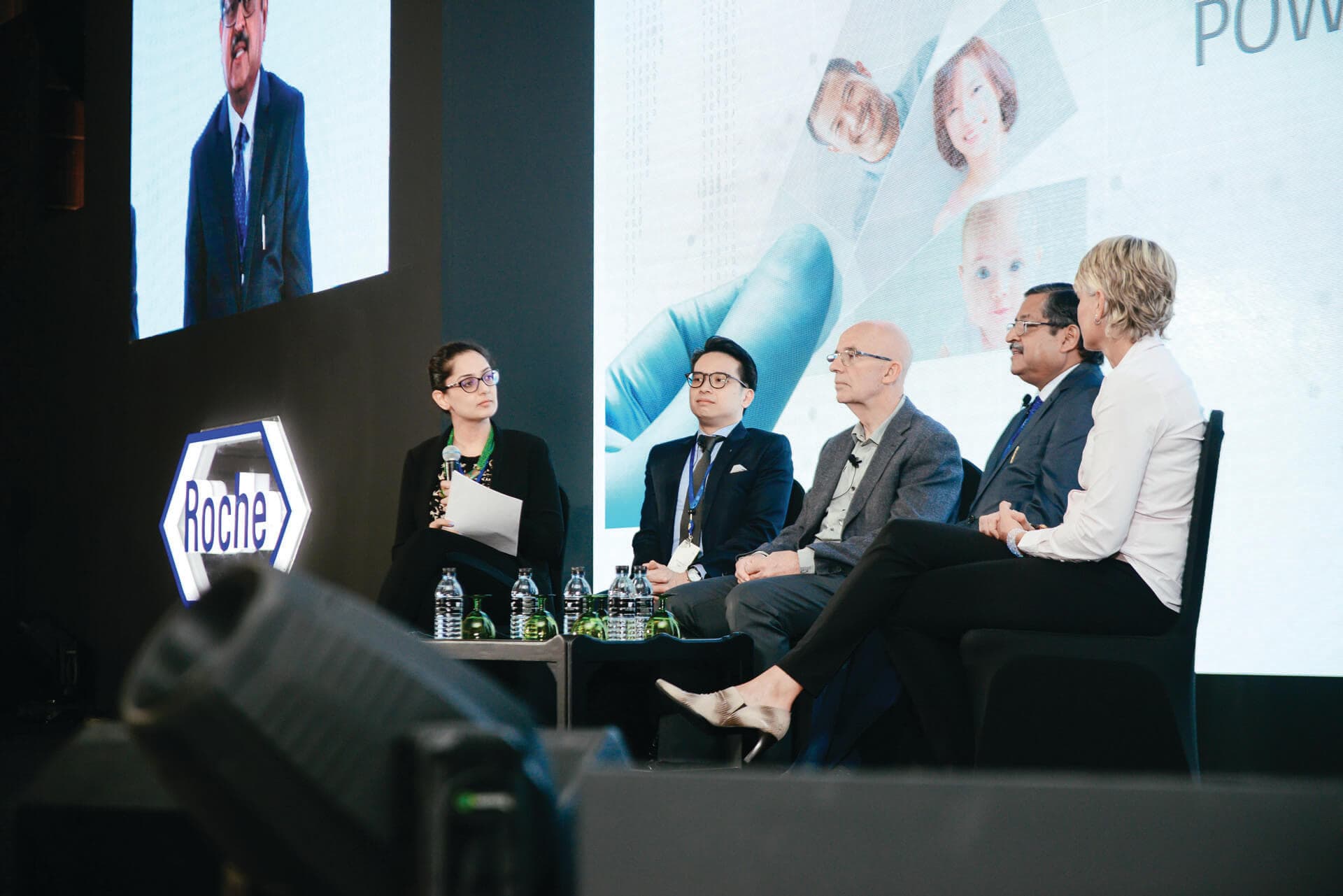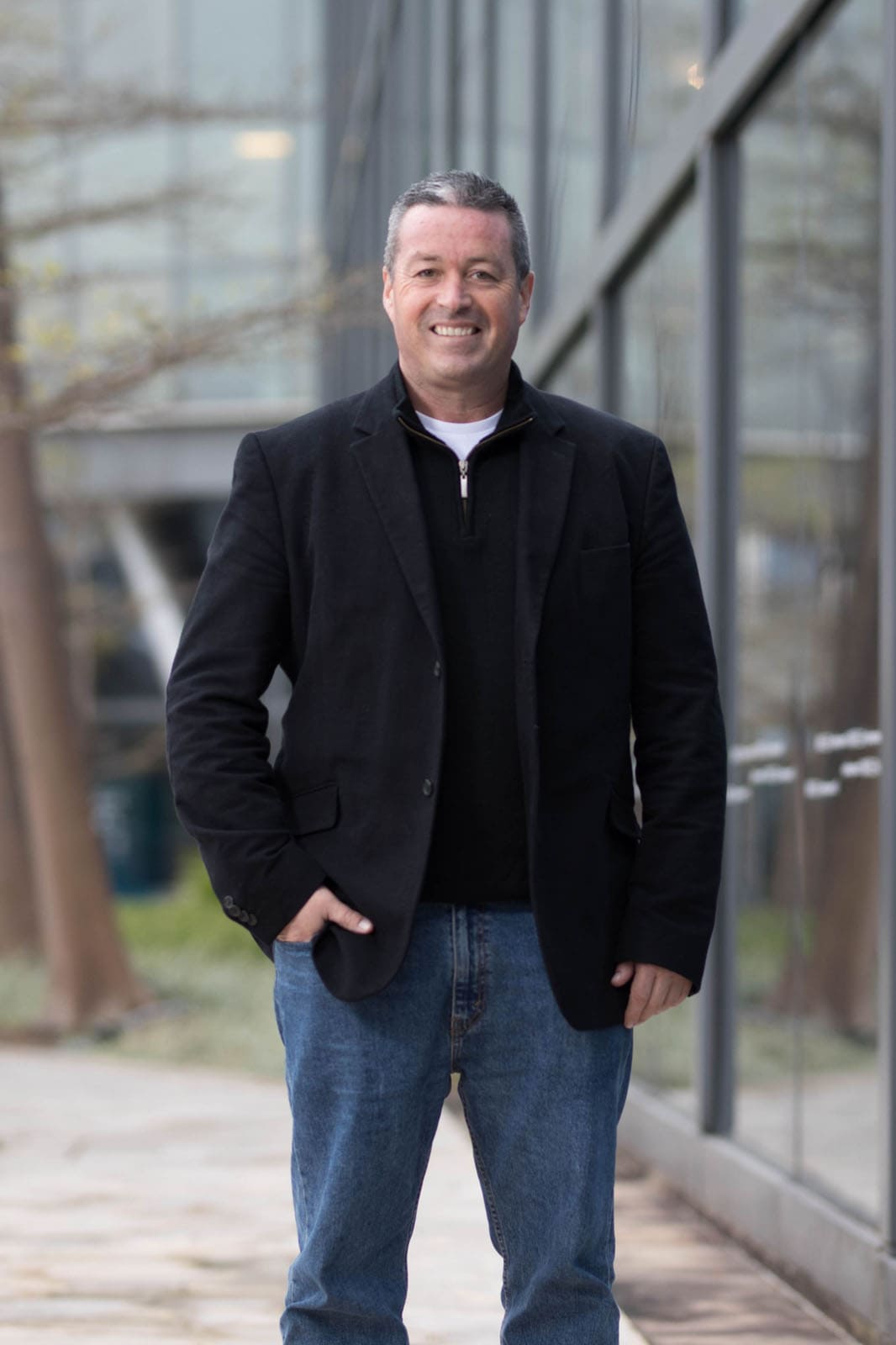The face of healthcare is changing, spurred by ageing populations and logistical challenges. One doctor is leaning into this shift in healthcare delivery — with a little help from the car-manufacturing industry.
Traditional care models can hamstring the efforts of healthcare organisations in resolving challenges centred around access, quality and efficiency.1 To improve the patient and clinician experience, the focus of care model innovation and digital health is now shifting towards patients’ well-being and the ubiquitous adoption of virtual services. In Asia, ageing populations and widespread chronic diseases will also necessitate a fundamental change in care models.2 A silver tsunami is already changing the make-up of the region, with people aged 65 and older expected to reach almost half a billion in Asia Pacific by 2025.
Reducing Healthcare Waste
Siriraj Hospital, the largest tertiary and quaternary care hospital in Thailand, is one player leading this transition in healthcare delivery. Faced with over 3.8 million outpatient and 80,000 inpatient visits a year, the state hospital used to have to deal with the traditional headaches experienced by healthcare institutions: long patient waiting times, overcrowding and complex care pathways.3 An evolution in thinking was desperately needed.
In response, Siriraj adopted the Lean management philosophy to rebuild its healthcare system. Combining this novel approach with innovative solutions, Siriraj not only revolutionised digital health for its visitors, but streamlined and enhanced the patient journey in the process. But how did a manufacturing framework originally developed by car-makers like Ford (and then perfected by Toyota nearly a century ago) help reshape healthcare scenarios?4
Lean, at its core, is based on the idea of transforming waste into value from the customer’s perspective.5 In the context of healthcare, waste relates to factors such as unnecessary waiting time for patients and clinicians, under-usage of core staff competencies and poor infrastructure design. At Siriraj, nurses, for example, used to spend only 30 to 40 percent of their time with patients. The rest was partially devoted to hunting down information at the request of patients or family members. Venti, a user-patient tracking software developed by the hospital, empowers patients to locate this information on a handheld device, such as whether they should consult a doctor or wait for lab results. Consequently, this enables nurses to dedicate more of their time and attention to patient care.

When applied to healthcare, Lean management philosophy involves enhancing processes and tools to minimise the waste of time, among other things. Technology has a big part to play in this endeavour.
A Lean Management Framework for Healthcare Efficiency
“To improve hospital efficiency, we need the right management framework. One is to have a design thinking process to truly understand patient needs and pain so that we can identify waste and value in the system from a customer perspective,” says Associate Professor Dr Cherdchai Nopmaneejumruslers, Vice Director of Siriraj Hospital. “We then implement Lean principles to eliminate waste and provide more value to patients. With a value driven mindset, disruptive innovation technologies such as 5G, Internet of Things, cloud, AI and mobile technology can redesign the way we deliver care to the patients with more efficiency.”
Among these innovations is Siriraj Connect — a mobile app which enables patients to get the most out of Siriraj’s services while reducing wait time within the hospital. First introduced in 2019, the app provides visitors with personalised features. Patients can use it to schedule, track, register and confirm their medical appointments. They can also monitor their blood collection and drug gathering queues, as well as utilise telemedicine and make online payments through mobile applications.
Continuous flow,6 according to Dr Nopmaneejumruslers, is another tenet of the Lean principle. “It means we have to ensure value flows towards the patient without interruption. According to the key features of the mobile application, it helps control the number of patients visiting the hospital, balancing the amount of patient visits to the hospital and the number of clinicians available. Therefore, it helps cut bottlenecks and waiting times for patients, to improve continuous flow,” he adds.
As the COVID-19 pandemic wears on, this app allows patients, especially the elderly, to cut the number of visits to Siriraj and the amount of time they stay at the hospital for medical appointments. Using the app’s remote monitoring system, doctors are also able to observe the patient’s health condition or call them via a video chat to answer medication questions following discharge from hospital.
Running an Efficient Diagnostic and Pathology Lab
Prior to Siriraj’s digital transformation, dispatching blood samples to the lab was a laborious process and prone to human error. Today, it is largely automated. Patient information on the Siriraj Connect app is fed to the hospital’s information system, which programmes the auto labeller. The labels are then pasted on the test tubes and sent via a conveyor belt to the pathology laboratory.
Lab technicians place the test tubes in a pre-analytic instrument and the sample tubes move seamlessly from here to the analysers, finally completing the journey in a post-analytic instrument. The revamped laboratory automation system now enables Siriraj to efficiently process up to 5,000 sample tubes each day.7 “With this, we achieved a turnaround time of 75 minutes when it used to take more than two hours. Productivity increased by 18 percent as well,” Dr Nopmaneejumruslers explains, proudly.8
Effective automation has allowed Siriraj to deliver accurate results to clinicians in a far more efficient manner. This allows lab technicians and clinicians to collectively improve patient care and provide timelier diagnostics and treatment accordingly.
Related reading: Navigating Disruption with the Help of Digital Diagnostics

Paving the Way to a 5G Future
As technology evolves, so must healthcare services to ensure better patient outcomes. Leveraging AI and 5G’s high bandwidth and low latency capabilities, Siriraj has plans to collate pre-hospital data from diabetes and high-blood pressure patients on their physical activity, sleeping patterns and the types of food they consume. “We can then upload this data to the cloud. By applying AI algorithms, we will be able to predict and recommend the appropriate solutions through AI chat bot thereafter. These innovations and technologies must work together to provide value to the patient, while decreasing the number of visits to the hospital,” he emphasises.10
Driven by an ageing demographic and rising healthcare costs, the value of the medtech industry in Asia Pacific is expected to reach USD 157 billion by 2022.11 “Over the next 10 years, healthcare costs in countries like Thailand will increase due to the ageing population. More than ever the goal of healthcare in the future is to provide value-based healthcare, by using big data and AI algorithms to predict and provide personalised healthcare services and tele-health, and thus reduce unnecessary hospital visits,” concludes Dr Nopmaneejumruslers.12
Stay updated on healthcare and diagnostics news with Roche Diagram magazine.
*The information contained in this article was extracted from Edition 2021, Vol 9.






